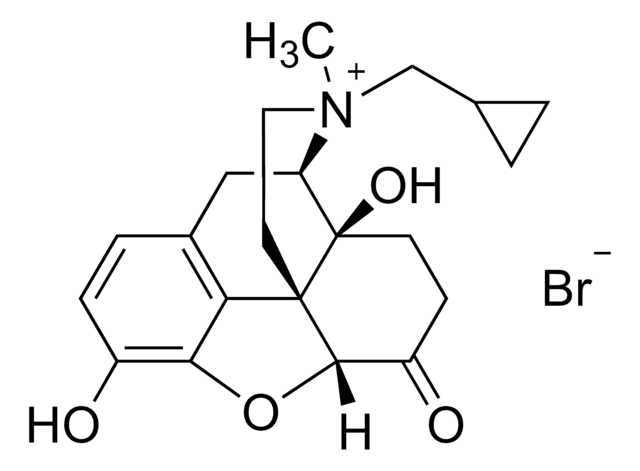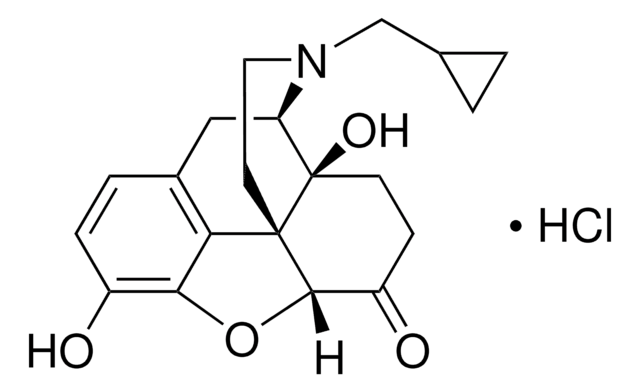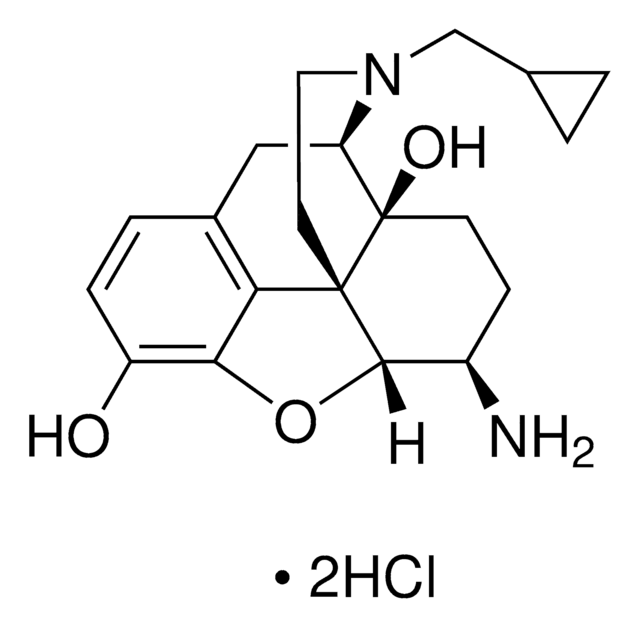SML0277
甲基纳曲酮 溴化物
≥97% (HPLC)
别名:
17-(Cyclopropylmethyl)-4,5α-epoxy-3,14-dihydroxy-17-methyl-6-oxomorphinanium bromide, MNTX, Methylnaltrexonium, Mrz-2663, N-Methylnaltrexone, Naltrexone MB, Quaternary ammonium naltrexone
About This Item
推荐产品
化驗
≥97% (HPLC)
形狀
powder
儲存條件
desiccated
顏色
white to beige
溶解度
H2O: ≥5 mg/mL
運輸包裝
wet ice
儲存溫度
−20°C
SMILES 字串
[Br-].C[N@+]1(CC[C@]23[C@H]4Oc5c(O)ccc(C[C@@H]1[C@]2(O)CCC4=O)c35)CC6CC6
InChI
1S/C21H25NO4.BrH/c1-22(11-12-2-3-12)9-8-20-17-13-4-5-14(23)18(17)26-19(20)15(24)6-7-21(20,25)16(22)10-13;/h4-5,12,16,19,25H,2-3,6-11H2,1H3;1H/t16-,19+,20+,21-,22?;/m1./s1
InChI 密鑰
IFGIYSGOEZJNBE-KNLJMPJLSA-N
基因資訊
human ... OPRM1(4988)
正在寻找类似产品? 访问 产品对比指南
一般說明
應用
生化/生理作用
特點和優勢
訊號詞
Warning
危險聲明
危險分類
STOT SE 2 Oral
標靶器官
Gastrointestinal tract
儲存類別代碼
11 - Combustible Solids
水污染物質分類(WGK)
WGK 3
閃點(°F)
Not applicable
閃點(°C)
Not applicable
商品
我们可提供多种与阿片受体相关的产品,以满足您的各类研究需求。
We offers many products related to opioid receptors for your research needs.
我们的科学家团队拥有各种研究领域经验,包括生命科学、材料科学、化学合成、色谱、分析及许多其他领域.
联系技术服务部门








